Samsung Galaxy S6 vs Apple iPhone 6 Plus
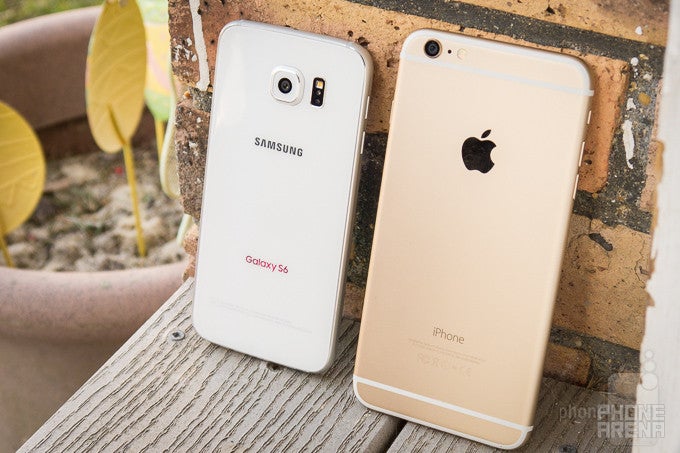
Introduction
After stepping off on the wrong foot and losing grip of the market last year, Samsung was obliged to come up with an enthralling flagship phone in 2015. The Samsung Galaxy S6 is already here and it has all the potential to help Samsung get back on track. You can't afford to disappoint when your leading position is endangered by numerous competitors.
One of these is Apple, which has gained quite the momentum with its most recent iPhone lot, the iPhone 6 and 6 Plus. With the former, Cupertino decided that it's high time it battled the competition in the segment that was almost entirely populated with Android phablets. How does the Galaxy S6 fare against the iPhone 6 Plus? That's what we're about to find out!
Design
In mid-2014, Samsung decided that it's high time it stepped up its design game and make use of higher-tier materials in its phones. The first device to employ such materials was the Galaxy Alpha, but the penultimate result of Samsung's design refreshment is definitely the Galaxy S6, a pretty stark departure from the plasticky roots of the Galaxy lineup, a polished and perfected vision of the company's design language.
The exterior of the Galaxy S6 boasts a metal frame with flattened side edges, complemented by a rear cover made of Gorilla Glass 4 that further adds to the premium status of the new Galaxy. This puts it in a similar league like that of the iPhone 6 Plus, a device that also boasts a hefty amount of premium in its build, though it relies more on aluminum than glass.
Both handset have pleasant in-hand feel, with no sharp edges to cause discomfort, though the sheer size of the iPhone 6 Plus makes it somewhat impractical, in comparison to the more compact Galaxy S6. The former also feels a bit slippery due to its aluminum back. In contrast, the glass rear cover of the S6 is less prone to sliding. Unfortunately, it's also way more susceptible to holding fingerprints and smudges than the iPhone 6 Plus.
Despite sharing a few common design aspects (the bottom-positioned speakers, the protruding cameras, and similar hardware button configurations), the Galaxy S6 and the iPhone 6 Plus stay true to their roots and are full-blown representatives of the design languages of their respective makers.
Display
The regular Galaxy S6 flaunts a 5.1-inch, Quad HD Super AMOLED display, while its iPhone rival comes with a 5.5-inch, IPS LCD one that boasts a resolution of 1080 x 1920 pixels. The S6 edge exhibits an ultra-sharp pixel density of 577ppi, which makes it one of the sharpest ones around; the iPhone 6 Plus with its pixel density of 401ppi is quite pixel-dense as well.
In terms of their properties, neither will disappoint. Both are extremely accurate; yet the Galaxy S6 is more balanced when set to its Basic screen mode, as it has a better white-point color temperature (6550K) than the iPhone 6 Plus (7318K). The reference point is 6500K, which means that the display of the iPhone is slightly more blueish and colder than the one on the new Galaxy flagship.
In its Basic screen mode, the display of the Galaxy S6 is one of the more accurate, if not the most accurate ones we've seen. Our display measurements reveal that its various nuances and shades all match their desired sRGB targets closely.
The iPhone 6 Plus is trailing in this aspect: despite being pretty close to the reference points on the color chart as well, it does not represent all colors as precisely as the Super AMOLED display in the Galaxy S6, and has a slightly colder tone to it.
As far as brightness is concerned, you'd hardly have any issues with viewing them in bright daylight. The iPhone 6 Plus achieves a maximum brightness of 574 nits, while the Samsung Galaxy S6 exhibits a marginally-lower brightness output of 563 nits (in case its super-bright mode kicks in, which usually happens when the phone is directly facing the sun).
Interface and functionality
The Galaxy S6 and iPhone 6 Plus are two new chapters in the eternal clash between Android and iOS. The new Samsung flagship runs on Android 5.0.2 Lollipop with a slightly toned-down, less-bloated rendition of Samsung's TouchWiz UI atop. Don't get us wrong, though – TouchWiz is still TouchWiz, so you'll still encounter things like Multi-window, One-handed mode, Screen pinning, and Smart Lock.. System-wide theme support is also among the noteworthy new features.
Running iOS 8.2, the large iPhone provides you with a straightforward and cohesive experience. True, the iOS-running iPhone 6 Plus does not flaunt as many built-in features as the Galaxy S6, but some of the new ones that arrived alongside the latest major refresh of iOS are pretty notable. For example, there's widget and third-party keyboard support, as well as the useful Reachability. There's no denying that the Galaxy S6 is more feature-rich, but the iPhone 6 Plus is undoubtedly more straightforward and intuitive.
Similar to the Galaxy S5, the new Samsung flagship has a fingerprint scanner embedded in its home button; this time around, it's a touch, not swipe one. The iPhone 6 Plus also has such a scanner in its home button.
Processor and memory
Clicking and ticking inside the Galaxy S6 is a 64-bit octa-core Exynos 7 Octa 7420 chipset that is swearing by the ARMv8 instruction set and the 14nm FinFET LPE manufacturing process. Its CPU flaunts four Cortex-A57 cores that can go all the way up to 2.1GHz and another four Cortex-A53 ones that are clocked up to 1.5GHz.
The iPhone 6 Plus, on the other hand, is powered by a 64-bit Apple A8 SoC, which comes with a 1.4GHz dual-core Cyclone processor on board. The Apple A8 chip is built on a 20nm manufacturing process and is said to be 30% faster and 25% more energy efficient than its predecessor, the nimble Apple A7.
In terms of real-life performance, both devices feel snappy, with no lag whatsoever, and you'll always be aware that you're indeed using a flagship smartphone.
In terms of RAM, the Galaxy S6 comes with 3GB of operational memory and overshadows the iPhone 6 Plus, which only has 1GB of the precious hardware commodity. Both phones slightly differ in terms of available storage options as well – 32, 64, 128GB for the Samsung and 16, 64, or 128GB of native storage for the iPhone. Alas, there's no microSD card slot in the Samsung flagship, which has always been one of the traditional features of almost all previous Samsung handsets, but at least we have ultra-fast eMMC 5.1 flash memory on board.
Internet and connectivity
True to their flagship statuses, both the iPhone 6 Plus and the Galaxy S6 provide their users with an A-class browsing experience. Due to the larger screen estate, the iPhone may be a tad better in this regard, but the Galaxy S6 with its stunning display should not be overlooked. From the get-go, the Samsung flagship allows you to choose between two browsers – the default Samsung one and Google's Chrome. Apple enables you to surf the web with the signature Safari, but of course, you can download third-party browsers on both devices as well.
The Galaxy S6 is fitted with an LTE Cat.6-capable modem, which supports theoretical transfer speeds of up to 300Mbps. The iPhone 6 Plus comes with an LTE Cat.4 modem, which only supports data transfer speeds of up to 150Mbps. Both devices support a surplus of LTE bands, though the iPhone 6 Plus probably has an advantage in terms of sheer numbers – it supports 20 different bands. We also need to mention that similar to the iPhone, the Galaxy S6 comes with a nano-SIM card slot – it's the first Samsung flagship to do so.
Camera
The Galaxy S6 is fitted with the same camera that appeared on the Galaxy Note 4 (a 16MP one with a 1/2.6” Sony Exmor IMX240 sensor); this time, however, Samsung has widened the aperture to f/1.9, which allows more light to hit the sensor and potentially improves low-light performance. We also have optical image stabilization on board. The camera app has a multitude of different modes on board: auto, selective focus, panorama, slow motion, fast motion, virtual shot, and manual control. It's worth mentioning that the camera app opens up blazing fast; you can also launch it by double-clicking the home screen.
The iPhone 6 Plus, despite donning only an 8MP camera at the back, is also among the best “camera-phones” out there. It's equipped with a five-element lens that has an aperture of f/2.2 and a sensor with a so-called “Focus Pixel” auto-focus system that allows it to adjust focus almost instantaneously. The large iPhone also has OIS in its specs sheet. Its camera app is more streamlined, but also comes with some notable modes, like time-lapse, slo-mo video, square photo, and panorama.
In terms of image quality, we have two well-prepared rivals inside the boxing ring. The camera of the Galaxy S6 produces spectacularly-looking and ultra-detailed photos that have just the right amount of sharpness and color fidelity. Unsurprisingly, the camera performs spectacularly in daylight conditions, but it also impressed us with its image quality in low-light environments. Night-time shots are detailed and have correct color temperature.
The iPhone 6 Plus is also a stunning device in terms of mobile photography. Respectable amount of details (though not as much as the Galaxy S6), correct exposure, and proper color reproduction (though tones tend to be a tad warmer than the ones from the Galaxy S6). Almost no noise is visible in the images taken with the iPhone 6 Plus. In poor lighting, the camera of the iPhone 6 Plus does not exhibit as much details as the Galaxy S6. We also have to commend its low-light performance, which might not be as good as the one of the Galaxy S6, but is still among the best on the current batch of smartphones.
The Galaxy S6 is able to record UHD and QHD clips, as well as 1080p at either 60 or 30fps. Slow-motion videos (120fps at 720p) are also part of the mix. Smooth and rich in details videos is what the Galaxy S6 will treat you to; the extremely fast continuous auto-focus is also a pretty notable feature. The iPhone 6 Plus, on the other hand, enables you to shoot 1080p video clips (30 or 60fps), slo-mo 120fps 720p ones, and even ultra slow-motion 240fps videos (once again at 720p). In particular, 1080p videos taken with the iPhone are smooth and a bit less noisy than the ones taken with its adversary; the Apple device also produces noticeably warmer videos, which you may dislike if you are a color purist.
Multimedia
Yes, multimedia is yet another theater of war for the Galaxy S6 and the iPhone 6 Plus. Up until now, Galaxy flagships have always had larger displays than the contemporaneous iPhone generation, but this is no longer true. The iPhone 6 Plus now comes with large, 5.5” IPS display that's perfect to watch video on.
That being said, the Galaxy S6 is also a rather suitable device for multimedia viewing, despite the fact that it's donning a smaller display. Media content looks especially snazzy on that Super AMOLED panel. That being said, the Galaxy S6 might be donning a smaller display, but it's certainly more fit to provide a better multimedia experience.
In terms of audio, the iPhone 6 Plus has the upper hand. It produces deeper, more profound sound from its bottom-firing loudspeaker. The Galaxy S6 is not sub-par in this regard, but it simply can't match the depth of the iPhone; sound is a bit subdued and thin. Both perform pretty well, but we'd choose the iPhone 6 Plus over the Galaxy.
Call quality
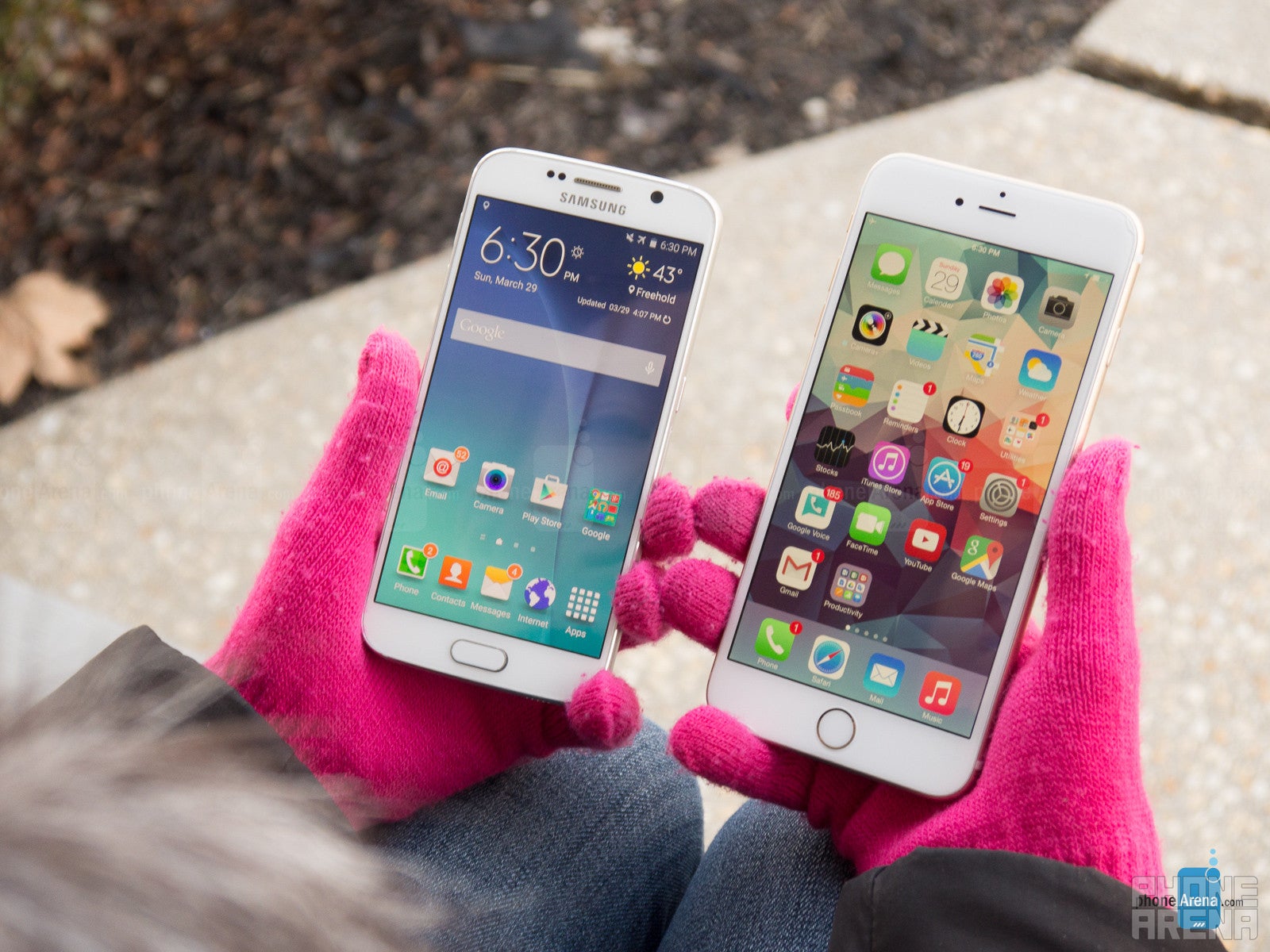
Battery life
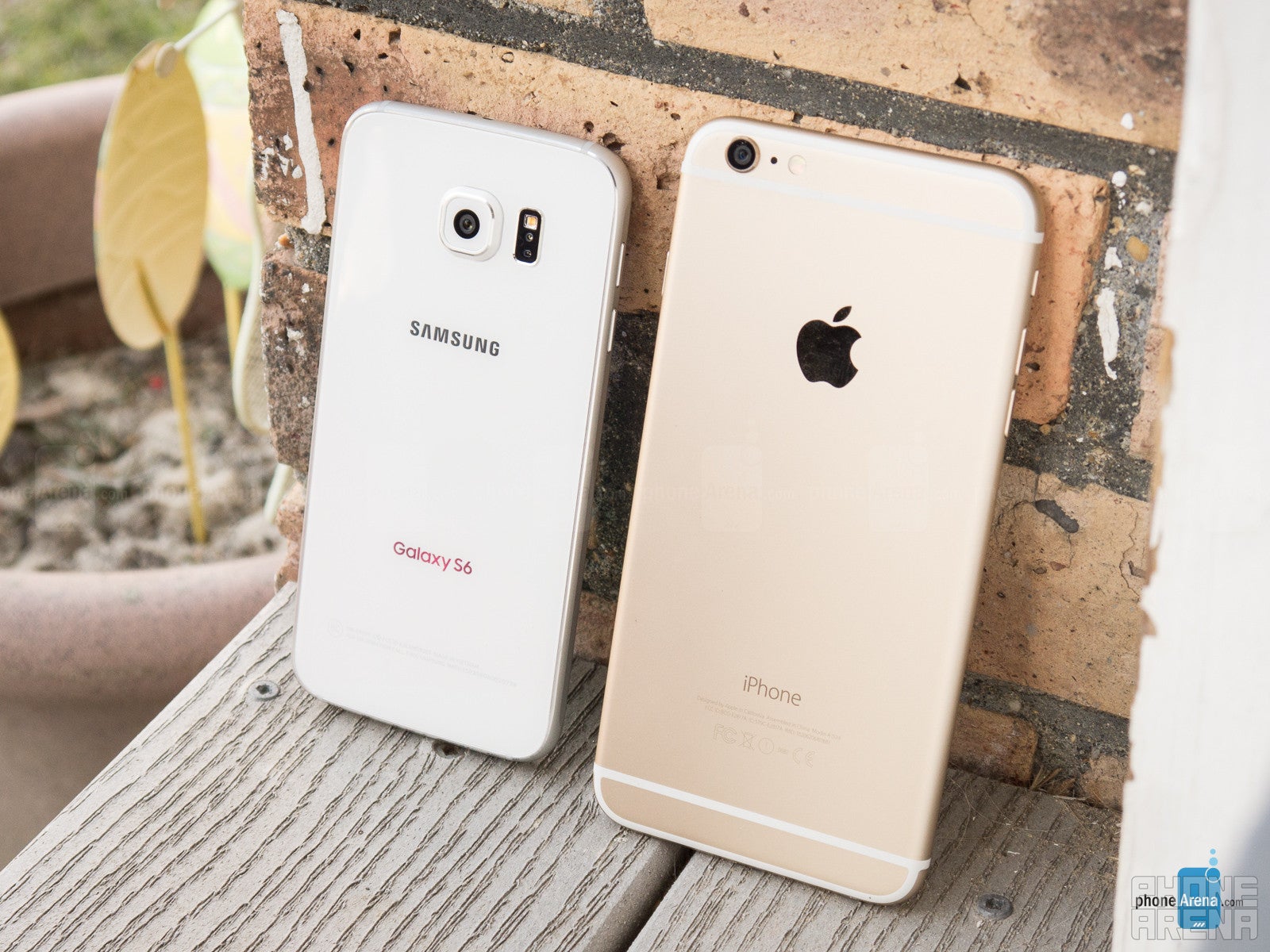
Conclusion
It's not possible to discern whether the iPhone 6 Plus or the Galaxy S6 is the superior device. Indeed, some may say that Samsung is slowly nixing the distinct features that have traditionally set it apart from the competition (a microSD card slot on board and a removable battery), but hasn't Apple actually done the same by releasing such a large phablet like the iPhone 6 Plus?
Certainly, the Galaxy S6 is the best smartphone Samsung has ever churned out (along with the S6 edge). Provided that you're on the market for a feature-packed Android champion that wants to excel in every category, then you can hardly go wrong with the Samsung Galaxy S6. Still, if large display, a more straightforward user experience and a more perfected app ecosystem stand higher in your book, then the Apple iPhone 6 Plus is certainly a better option for you.

Samsung Galaxy S6
Pros
- Doesn't have a slippery back
- Sharper and more color-accurate display in Basic mode
- Fast-charging
Apple iPhone 6 Plus
Pros
- Bigger screen
- Has a more comfortable feel
- Holds zero fingerprints
- Super intuitive user interface
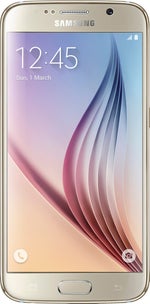
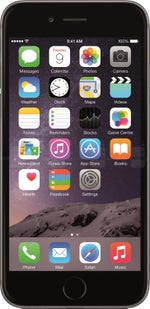
























Things that are NOT allowed: